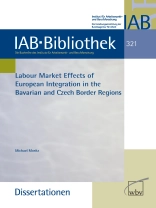Welche Auswirkungen hatte der Fall des Eisernen Vorhangs und die ökonomische Integration der mittelosteuropäischen Staaten für den Arbeitsmarkt in den Grenzregionen zwischen den alten und den neuen EU-Mitgliedsstaaten? Michael Moritz geht dieser Frage am Beispiel der bayerisch-tschechischen Grenzregion nach. Moritz untersucht für beide Länder, ob die räumliche Nähe für die Entwicklung der Wirtschafts-, Qualifikations- und Lohnstrukturen in den grenznahen Kreisen eine Rolle spielt und inwieweit sich signifikante Unterschiede zur Entwicklung in den grenzfernen Regionen feststellen lassen.
Publikationssprache: Englisch
Cuprins
Vorwort und Danksagung
1 Introduction: Analysis of Labour Markets in Border Regions
1.1 Motivation
1.2 Research Questions
1.3 The Approach and the Structure of the Thesis
Appendix to Chapter 1
2 A Survey of the Literature
2.1 Theoretical Background: Integration Effects in Border Regions
2.2 Empirical Studies on Integration Effects
Appendix to Chapter 2
3 Labour Market Effects in the Bavarian Border Region
3.1 Introduction
3.2 Data and Basic Definitions
3.3 The Labour Market in Eastern Bavaria: Some Descriptive Evidence
3.4 Econometric Analysis of Qualification Trends
3.5 Econometric Analysis of Wage Differentials
3.6 Conclusion
Appendix to Chapter 3
4 Labour Market Effects in the Czech Border Region
4.1 Introduction
4.2 Data and Basic Definitions
4.3 The Labour Market in the Czech Republic: Some Descriptive Evidence
4.4 Econometric Analysis of Qualification Trends
4.5 Econometric Analysis of Wage Differentials
4.6 Conclusion
Appendix to Chapter 4
5 Summary and Outlook
List of Figures
List of Tables
List of Abbreviations
References
Kurzfassung












